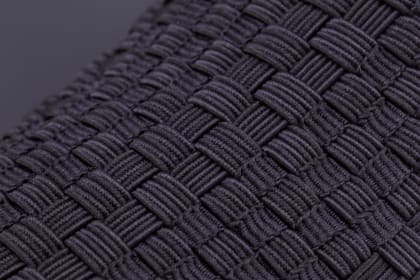About All 4 Way Stretch Fabrics
About All 4 Way Stretch Fabrics
Blog Article
10 Easy Facts About All 4 Way Stretch Fabrics Shown
Table of ContentsAll 4 Way Stretch Fabrics Fundamentals ExplainedThe Ultimate Guide To All 4 Way Stretch FabricsNot known Facts About All 4 Way Stretch FabricsThe Facts About All 4 Way Stretch Fabrics RevealedWhat Does All 4 Way Stretch Fabrics Do?The Only Guide to All 4 Way Stretch FabricsThe Best Strategy To Use For All 4 Way Stretch Fabrics
As I additionally want UV security from my garments when I go out, I would select a largely woven cotton textile. One even more factor to consider when buying the material is the method it will certainly after cleaning.A safe bet would be to acquire at the very least 10% extra textile. If you can acquire preshrunk fabric, this is the finest.

If you are matching the shade, like choosing the lining for the primary material or picking fabric to add as trim, this is especially crucial. The textile display rooms will typically have a light well where you can see the material in sunlight (or a window with great light from outdoors).
Fascination About All 4 Way Stretch Fabrics

Many textiles are regarding 44 vast. When you go to purchase textile, price quote just how a lot you want initially and after that go to the shop.
Some great bargains can be had this method. In dressmaking, we acquire fabric by the yard/meter.
Some Known Questions About All 4 Way Stretch Fabrics.
In a quarter of a lawn, you obtain a 9 by 44 strip of material, which is regarding 22 centimeters in size. It is constantly better to buy wider fabric. According to the size of materials, they may be called single-width and double-width. Single size is normally approximately 49 inches in size and dual width up to 60.
Pick materials that are not too tough or rigid, or you would not be comfy in them. Linen, Denim, flannel, For cooler climates, choose woollen (100% as well as wool blends) woollen tweeds, wool crepe; it essentially depends on what trousers you are speaking about Tailored pants, Unstructured Pant, Combined, Jeans.
Corduroy is comfortable to put on material to pick for trousers. All cotton fabrics benefit children. You can pick a cotton satin stretch or a cotton twill or cotton satin or yard. Knit materials are additionally terrific for children you can go with woollen knits. Interlock knits are dressmaking knits that extend throughout the grain.
5 Simple Techniques For All 4 Way Stretch Fabrics
Inspect out this message on the ideal textile for clothes for babies and kids for even more detail on this topic. Lightweight cotton is my favored to stitch skirts. Cotton grass towel in beautiful prints is excellent. Silk jacket is a terrific material for stitching skirts, as is Ponte Roma weaved textile.
Also, drapey rayons, soft woollen, lycra blends, and stretch velvets are all suitable for sewing skirts. Woollen (Wool crepe has an excellent drape and offers adequate framework for coats; wool tweeds are excellent also), Linen & Flannel. Velvet (Take A Look At the slouchy velour sports jacket tutorial, incidentally). Light-weight knits benefit free-flowing jackets like this waterfall jacket pattern Raw silk, satin, taffeta, velour, Shoelace, silk chiffon, and Fabric are all great for making dresses.
You can buy medium-weight textiles with some spandex/elastane added for a suitable bodycon-type gown. For drapey gowns, you can choose light-weight fabrics. Crepe, challis, and charmeuse are all drapey textiles fit for this style.
Lightweight cotton textile, Cambric, Chintz, Twill, Faille, Seersucker, Poplin, lightweight woven broadcloth, batiste, linen, eyelet are great for making t-shirts and blouses. Smooth satin material is great for making ventilated tops. When purchasing formed fabric (many of the patterned material comes with a size of 45 or 54 inches), there will certainly be pattern repeat in these fabrics, and this need to be taken into consideration when reducing fabric as well as purchasing them i.e., if you want to match the patterns at the joints.
The Ultimate Guide To All 4 Way Stretch Fabrics
The concepts will certainly be dispersed in an organized fashion on the textile. You might observe in some cases If the print is not placed on the textile properly, it can not be matched or lined up when built without distorting the textile and the hang of the garment.


The textile weight is dependent on lots of aspects like the weave, fiber kind, and so on and is usually represented by GSM. GSM can vary from 60 -700; 700 being the GSM of extremely high-quality woolen material.
One point you have to maintain in mind is that greater fabric weight does not signify higher material top quality. You can not pick high textile weight material denim for my website a lightweight drifting shawl.
Look into the list of the 70+ different material surfaces and treatments. In a nutshell, one of the most important standards to look for in the fabric you acquire are as complies with. The number of strings per inch of fabric (yarns-per-inch). Greater the thread count higher the number of threads woven per inch, and the higher the top quality.
All 4 Way Stretch Fabrics Fundamentals Explained
This is extremely crucial in any type of material. In high-grade fabric, this balance (either in numbers or in size) will always be preserved. Procedures made use of on textile to enhance look and efficiency. The fibers that are woven to make the textile will certainly either be as a single hair or will certainly be created by incorporating 2 threads (turned).
A two-ply yarn transcends to a single-ply thread.
If you are preparing yourself to begin a brand-new stitching job, picking a textile will certainly be the most essential step once you determine what you intend to make. After you've gone to all the difficulty and cost of purchasing the sewing equipment you love, a pattern you enjoy, and a material you love, you want the ended up product to be a success? One means to achieve that is to start by seeing to it your fabric is genuinely ideal for the project.
The Best Strategy To Use For All 4 Way Stretch Fabrics
For instance, if you're making a quilt, you'll automatically wish to utilize quilter's weight cotton for ideal results. What if you desire to make an item of garments? Just how do you know which material will offer you the ideal result? Choosing a textile simply since you enjoy the print or design on it isn't necessarily the very best method.
In order to avoid doing a whole job for virtually absolutely nothing, we have actually compiled some pointers to assist you determine which material is right for your project. Let's say you currently have a task in mind; how do you locate the ideal material for it?
Assume of the attributes you want the ended up product to have. Do you want a strong shade or a print? If you are making a non-wearable item such as a pillow cover or pot holder, use a sturdy textile such as canvas.
There is so much information around about textiles, their attributes, and their uses, it could reach be overwhelming! Do not try to take it in all at when; simply begin with the task at hand. Discover all you can concerning the material you make use of for this task.
Report this page